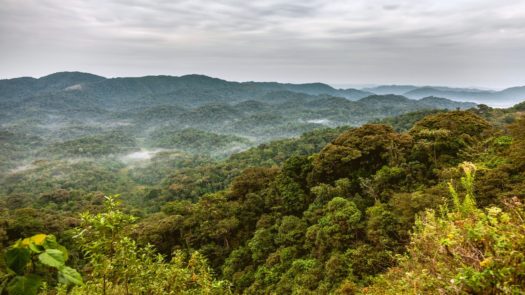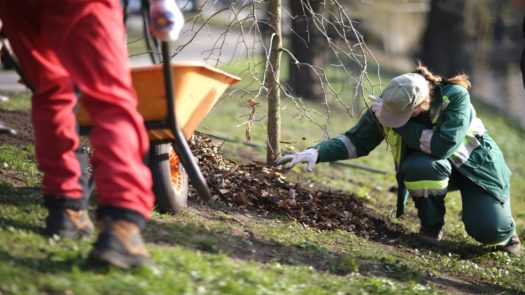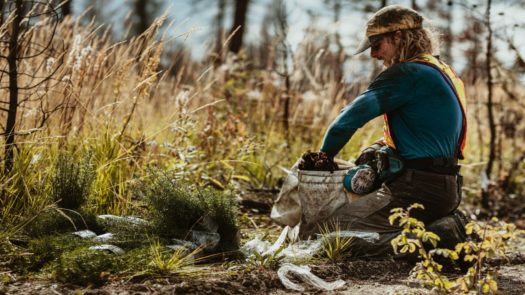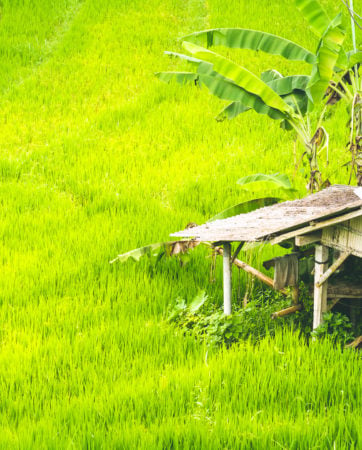Published on: June 28th, 2022
Last updated: December 28th, 2023
Trees. They help combat climate change by removing carbon dioxide from the air and in turn releasing oxygen. So it's no surprise that tree-planting has taken root as one of mankind's favourite ways of offsetting the daily damage being done to our planet. It's estimated that these schemes, many of them corporate-run, plant close to two-billion trees each year.
Unsurprisingly, these projects make for impressive headlines. Over the last decade we’ve seen incredible feats and promises, like Ethiopia planting 350 million saplings in less than 12 hours in 2019, or Pakistan’s Billion Tree Tsunami project of 2014 being expanded into a 10-Billion Tree Tsunami in 2018. By 2050, China aims to have planted 35 million hectares of trees in arid areas. And the World Economic Forum’s (WEF) 1t.org project to encourage governments, corporates and NGOs to commit to “conserve, restore or grow '' one trillion trees by 2030.
What is the problem with tree-planting initiatives?
It all sounds great on the surface, but it is becoming apparent that not only is tree-planting not the fool-proof solution to climate change some may think it is, but in many cases such projects may be actually causing more harm.
The natural forests and green areas that do the most to repair are far more complex than just row upon row of trees. They are entire microcosms that do so much more than absorb carbon dioxide. That’s something that can’t be replicated by popping a few thousand saplings in the ground and hoping for the best. Forests can take up to 65 years to regrow and their important diversity is impossible to recreate if only one kind of tree is planted.

The truth is that it takes a lot of work to plant and nurture even a single tree. Some initiatives focus purely on planting large numbers in the shortest amount of time. For many it can become a superficial form of corporate greenwashing. Business can continue as usual, no matter how much damage is being done to the plant, so long as we’re planting trees. What is often forgotten though is that you can’t repair environmental damage in one part of the world by planting trees elsewhere.

It is vital to plant the right trees in the right places and then give them continual care and enough water and food. Some large-scale projects are sadly done on a plant-and-go basis. Tragically, in many cases large percentages of these saplings die. Another concern is that planting trees where they would not naturally grow puts enormous strain on the existing biodiversity and water supplies in the region.

What to look for when choosing a tree-planting initiative?
If you’re keen to support a tree-planting or similar initiative, but want to make sure you’re really making a positive difference, there are some important questions you can ask and things to look for.
Support organisations that understand that first and foremost, we should be protecting the existing forests and reducing greenhouse gas emissions. Reforestation isn’t and shouldn’t be seen as an excuse to continue with harmful behaviour. Then check that their projects involve everyone, from the stakeholders to the locals, right from the planning stages. This is one way to reduce the risk of negative impacts of communities and the environment.

Is the initiative working to reforest a previously forested area, rather than displacing an ecosystem by planting on land that was never a forest to begin with? Taking that a step further, natural regeneration may seem like a slower and more passive option, but it will allow areas to be returned closer to their natural state.

Have they carefully selected which native species to plant in order to maximise biodiversity? While some plants or crops are known to grow fast and be profitable, they are often invasive and can do extreme damage. Indigenous knowledge is vital for planning a successful project and if small scale trials have been run in the lead-up to the big initiative, even better. Bear in mind that many projects span between one and three years, where often trees can take at least five years to become stable and actually start making an impact. So look for organisations that are in it for the long haul.

How does Wilderness Safaris do it ethically?
Wilderness Safaris has taken a lot of these issues into account and are determined to make a lasting difference in the areas where they have camps.
To begin with, they have their own nurseries where they only plant native trees. By planting on their own properties, they avoid outsourcing the work to another company, meaning that they have more control on how responsibly the project is handled. In addition, they have a dedicated, permanent team who are on the ground, actively looking after the young trees.

Thanks to the efforts put into this project from early, Wilderness Safaris has an economically sustainable model firmly in place. More than just tree planting, its effects are more far-reaching in that it creates job opportunities for the local community.

In Rwanda particularly, their focus is on rehabilitating land that was previously farmland, reforesting and expanding Gishwati-Mukura National Park. Extensive research has gone into which specific areas to reforest keeping the headwaters of the rivers and the water quality in mind, especially since communities in the area rely on the rivers. Wilderness is looking at how they can reforest in a way that they improve the water, expand the forest and also positively impact the habitat of chimpanzee groups that live in the area. The aim is to increase the park and forest area by 675 hectares, in stages. As of June 2022, they have successfully planted a total of 70,000 trees on Bisate Lodge – a tremendous milestone for their reforestation project.

Wilderness also has an initiative in place at Toka Leya in Zambia which allows guests the chance to plant a tree while staying there. Guests choose their species from the carefully managed nursery and even name it. The trees here are grown from seed and the saplings taken care of in the nursery until they are ready to be planted out – at which point their location will be recorded on a comprehensive map.

The Wilderness staff stationed in Linyanti Wildlife Reserve in Botswana made full use of the empty camp during lockdown to finish building a fully-operational nursery to help with their reforestation efforts in the area. The nursery itself was built using leftover construction material from the staff village and DumaTau, meaning that no new materials needed to be bought.The trees nurtured here will be planted in the camps and across the concession, with a focus on the riparian belt and the wooded banks of the Linyanti and Savuti channel. Again, the aim is to allow guests to have the opportunity to plant their own tree during their stay.






